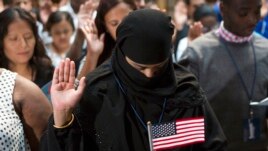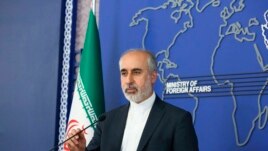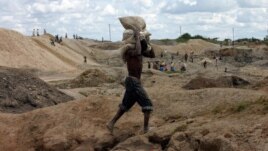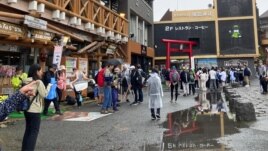19 September 2023
India expelled a Canadian diplomat Tuesday and accused Canada of interfering in its internal affairs.
The move came one day after Canadian Prime Minister Justin Trudeau said his government was investigating a possible connection between India and the killing of a Sikh activist, Hardeep Singh Nijjar.
Nijjar, a Canadian citizen, was an activist in the Sikh independence movement. He was shot to death on June 18 outside a Sikh cultural center in Surrey, British Columbia.
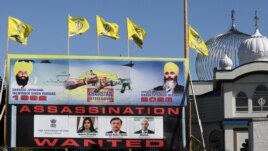
A sign outside the Guru Nanak Sikh Gurdwara temple is seen after the killing on its grounds in June 2023 of Sikh leader Hardeep Singh Nijjar, in Surrey, British Columbia, Canada September 18, 2023. (REUTERS/Chris Helgren)
Canada expelled a top Indian diplomat in protest.
The Indian government has denied any involvement in Nijjar's killing. But Trudeau said, "We are simply laying out the facts as we understand them." He added, "We want to work with the government of India to lay everything clear and to ensure there are proper processes."
India has repeatedly accused Canada of supporting the Sikh independence movement, called Khalistan. The movement is banned in India but has support among the Sikhs living in other countries.
In 2020, the Hindu nationalist government of Prime Minister Narendra Modi called Nijjar a terrorist. Indian media reported that he was suspected of organizing a bombing in Punjab, India, and training terrorists in a small area near Vancouver, Canada.
What is the Khalistan movement?
The Sikh independence movement began as an armed insurgency in the 1980s among Sikhs demanding a separate homeland. It was centered in northern Punjab state, where Sikhs are the majority. Sikhs make up about 1.7 percent of India's total population.
In 1984, Indian forces attacked the Golden Temple, Sikhism's holiest religious center, in order to capture separatists who had taken refuge there. The government reported around 400 killed in the operation. But Sikh groups say thousands were killed. The dead included Sikh militant leader Jarnail Singh Bhindranwale, whom the Indian government accused of leading the armed insurgency.
On October 31, 1984, Prime Minister Indira Gandhi, who ordered the attack on the temple, was assassinated by two of her bodyguards, who were Sikhs.
Her death led to several anti-Sikh riots. Crowds of Hindus went from house to house across northern India, pulling Sikhs from their homes and killing them.
There is no active insurgency in Punjab today, but the Khalistan movement still has supporters in India and abroad. And Prime Minister Narendra Modi's government has also arrested leaders from groups that are linked to the movement.
How strong is the movement outside India?
India has been asking countries like Canada, Australia and Britain to take legal action against Sikh activists. India has raised these concerns with Canada, where 770,000 Sikhs make up nearly two percent of the country's population.
Earlier this year, Sikh protesters removed an Indian flag and broke the window at the country's office in London to protest the arrest of a Sikh religious leader. Protesters also smashed windows at the Indian consulate in San Francisco and fought with embassy workers.
The Indian government has accused Khalistan supporters in Canada of damaging Hindu temples with "anti-India" graffiti and of attacking India's diplomatic office in Ottawa during a protest in March.
Last year, Paramjit Singh Panjwar, a Sikh militant leader and head of the Khalistan Commando Force, was shot dead in Pakistan.
I'm Andrew Smith.
Hai Do adapted this report for VOA Learning English from Associated Press sources.
___
Words in This Story
internal –adj. taking place inside a country or organization
insurgency –n. usually a violent attempt or long militant effort to take control of a government or area; a rebellion
assassinate –v. to kill someone for political reasons

